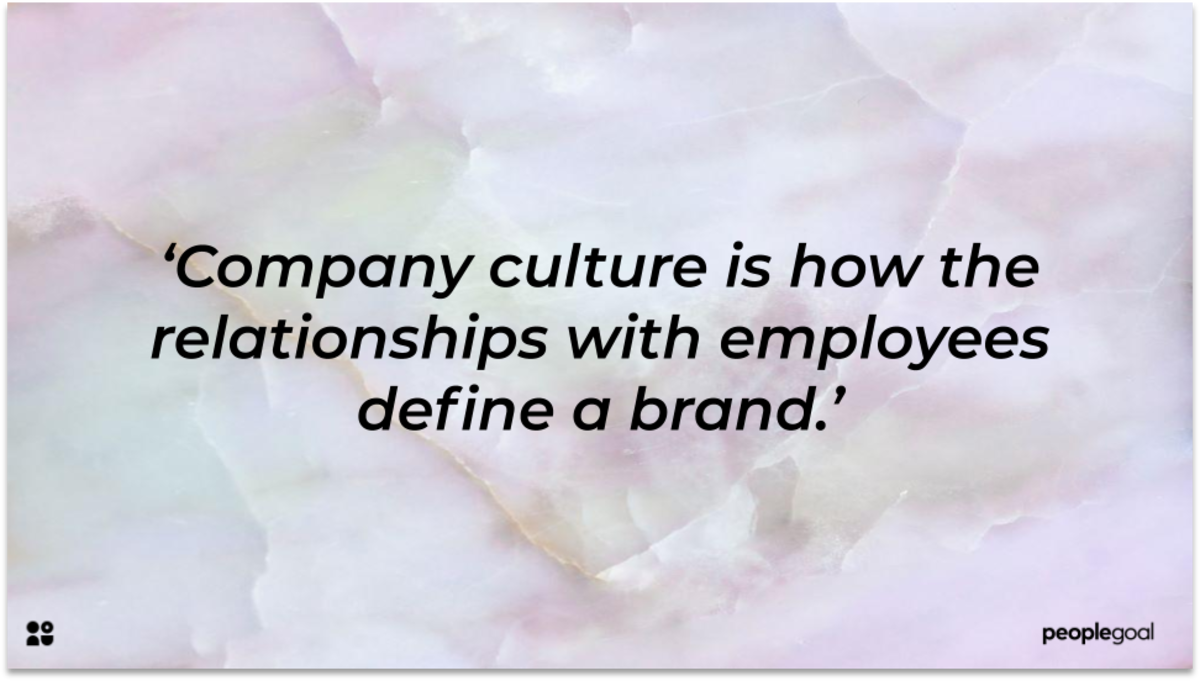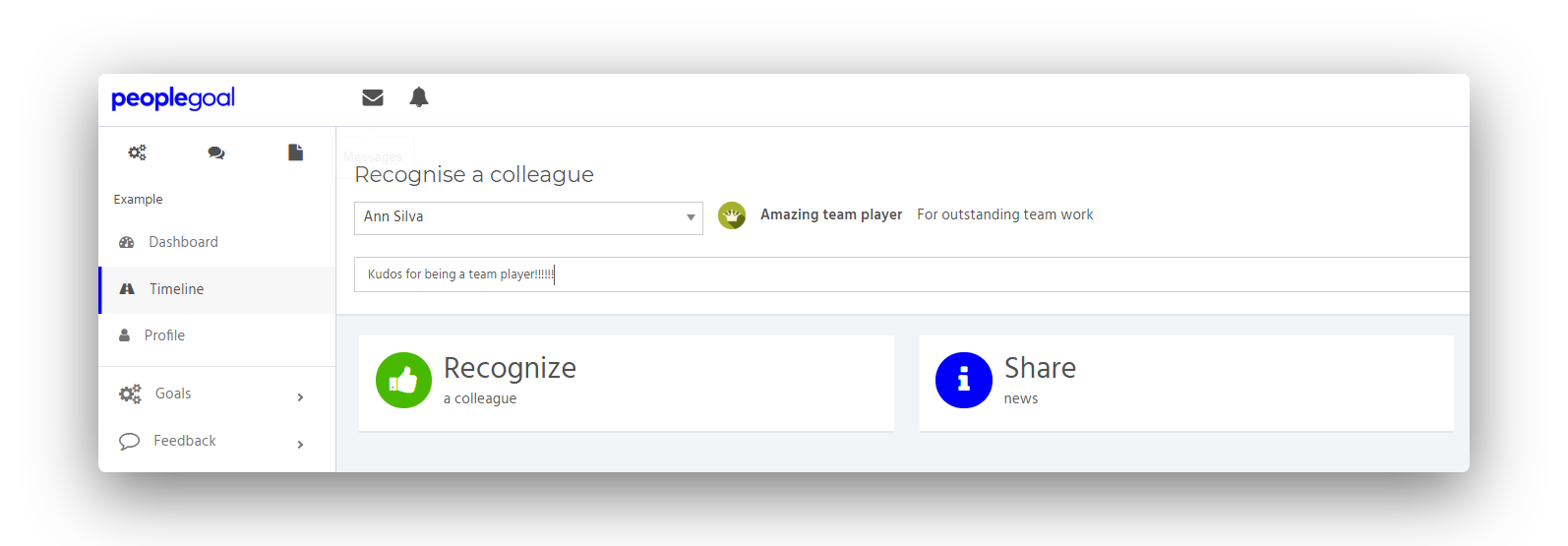Employee competencies are traits or attributes found in people. People can be rated along trait continuum, with some rated higher in the trait, whilst others being rated moderate or low in the said trait. In the context of the workplace, there are a number of key attributes which aid and develop a company. Below is a comprehensive list of these key attributes as well as the levels of each attribute. This can help employees recognize at what level they are performing, and where they can improve to achieve even more success!
Accountability
Definition: Demonstrates a high level of ownership and commitment to their own results and that of the team.
Level One:
Accepts responsibility for own behaviour and job related tasks. Clarifies with supervisor the expected behaviours and performance associated with the role. Establishes the metric with which performance is based, accepts the consequences of their own performance and avoids laying blame.
Level Two:
Takes the initiative in order to achieve goals. Demonstrates a high level of effort to complete work to agreed standards. Willing to modify their own behaviour and approach to improve performance.
Level Three:
Makes contributions to the goals of others and their team. With the other team members, takes ownership of how the team behaves and the results it produces.
Level Four:
Assumes responsibility for the performance and results of the entire team. Willing to provide immediate feedback on individual and team performance. Ensures the consequences associated with behaviour and performance are appropriate and understood.
Communication
Definition: Listens; speaks and writes concisely and with clarity.
Level One:
Listens in order to clarify information. Both written and verbal communication are presented in a clear, articulate manner. Avoids jargon. Asks questions to test for clarity and understanding.
Level Two:
Provides timely, appropriate and useful information to others. Determines the most effective method of communication. Tailors communication to the need of the intended audience. Trusts their judgement when determining what information is useful to co-workers and clients.
Level Three:
All of the above. Increases the value of information by providing sound interpretation. Uses personal and organizational knowledge to enhance the value of information for others. Willing to make their point with resistant audiences.

Composure
Definition: Responds constructively to situations with high pressure, emotions or conflict.
Level One:
Adjusts comfortably to demanding and difficult situations. Focused on resolving issues rather than defending positions.
Level Two:
Deals with issues effectively and sensitively. Can detect signs of anxiety and/or stress in others. Acknowledges the feelings associated with conflict between individuals. Encourages people to express feelings as a step in clarifying and defusing conflict.
Level Three:
All of the above. Achieves mutually agreeable results in the face of conflict. Approaches conflict as an opportunity for resolution. Does not feel threatened by conflict.
Decision Making
Definition: Assesses the importance, risk and urgency associated with each situations and the actions which are timely within these situations.
Level One:
Makes timely and accurate decisions with readily available information and within clearly defined parameters. Determines the priorities and acts within the agreed upon time frame. Applies the agreed upon standard of quality. Pertinently, identifies choices from a range of previously made decisions and selects the one which bests fits the needs of the situation
Level Two
Takes a course of action based on what is important. Uses objective decision making not influenced by personal biases. Does not procrastinate.
Level Three
Makes good decisions by clarifying ambiguous situations and accurately assessing risks. Develops alternative strategies and recognises the consequences associated with each.
Level Four
When there is incomplete or conflicting information, the individual makes decisions based on the values and principles of the organisation. Uses these values to determine what is important and to guide decisions. Makes decisions which others have been reluctant to tackle.
Goal Setting
Definition: Sets individual, team and organization wide goals to increase effectiveness.
Level One
Is motivated by achieving or surpassing challenging goals. Has goals which direct, and to a certain extent guide, their personal and professional life. Goal setting could be based on the SMART methodology or the OKR methodology. Measures effectiveness by the extent to which goals are achieved.
Level Two
Maintains focus by aligning individual goals to the goals of the team or the organisation. Develops goals by determining how best to contribute to the goals of the team and organisation. Monitors progress in order to address and prioritise change. Modifies goals in response to changing priorities.
Planning
Definition: Uses an effective methodology/plan to determine priorities, set goals, create an actionable plan, take action and measure results.
Level One:
Organises work in order to complete routine tasks. Prepares daily, weekly and monthly plans. Prioritises and plans actions based on urgency, importance and knowledge of team/departmental plans. Modifies future plans based on prior success.
Level Two:
Prepares plans which guide the activities of a team. Conducts needs assessments and prepares feasibility studies. Analyses information to identify trends, issues, costs and benefits. Plans also include information for other. Schedules work. Conducts post implementation reviews and documents results for future success.
Level Three:
Leads/Contributes complex projects which impacts multiple stakeholders and the long term success of the organisation. Uses resources from across the organisation. Sustains momentum and support through continuous communication. Recognises key achievements as a method of commitment and momentum to the project and team.
Problem Solving
Definition: Takes a systematic approach to solving problems.
Level One:
Recognises problems in a reactive manner. Uses good judgement and common sense to resolve issues. Uses experience and knowledge to detect problems in the workplace and related issues. Considers a wide range of evidence and contextual information in which the problem occurs to find solutions. Seeks assistance, usually from a supervisor in resolving ambiguous or complex problems.
Level Two:
Uses all available resource to assess a problem and identify the optimum solution. Applies a proven methodology when working through problems. Enjoys the challenge that problem solving brings. Can identify problematic trends before said problems occur. Provides constructive input when participating in team-based problem solving.
Level Three:
Takes initiative to identify conflicts within a team and engenders an environment which supports resolution. Promotes problem solving as an integral organizational process. Reads body language and alike to identify early signs of conflict or discomfort. Identifies individual or team weaknesses and adapts the problem solving process to these needs.

Self-Development
Definition: Knows own capabilities, seeks out feedback and responds in a manner which aids performance.
Level One:
Responds positively to performance related feedback and strives to build upon this. Works with a supervisor to devise a plan for professional development in the role. Takes steps to ensure they follow the development plan. Gains feedback from supervisor and others on attempts to use new knowledge and skills.
Level Two:
Actively seeks opportunities for development. Independently reviews own progress. Reflects on and learns from experiences. Develops improvement plans from their own initiative. Responds well to new situations that require growth or are challenging.
Level Three:
Takes full advantage of opportunities to grow beyond current role. Broadens perspectives on a range of multi-disciplinary issues by undertaking projects beyond the scope of their role. Teaches and/or mentors others. Volunteers for assignments that others may be reluctant to do.
Self-Confidence
Definition: A feeling of trust in one’s abilities, qualities and judgement.
Level One:
Exudes self-confidence. Works with little supervision and conducts oneself with assurance.
Level Two:
Acts independently on a regular basis. Can make decisions individually without asking what needs to be done. Corrects problems themselves and informs management accordingly.
Level Three:
Is not afraid of challenges, enjoys the difficulties that they bring. Likes stimulating work. Exercises calm, well-judged opinions during situations of conflict.
Level Four:
Actively seeks out challenging situations. Tackles difficult projects knowing that they may not always be implemented or successful.
Developing Others
Definition: The desire to foster the long-term growth of others, without fostering the role of an educator.
Level One:
Provides ad hoc instructions. Provides on the job, detailed instructions or demonstrations. Makes specific and useful suggestions. Make sure advice is available is elsewhere if they themselves are unavailable.
Level Two:
Provides reasoning when giving instructions to foster further development. Stresses the future benefits that the person will gain by following the instructions.
Level Three:
Oversees the development of others in the short to medium term, sometimes as a mentor/educator. Expresses confidence in their potential to grow. Willing to help others. Reinforces expected and current abilities.
Level Four:
Follows each individuals progress and provide longer-term training. Gives effective constructive feedback. Provides reassurance after a setback and gives individualised feedback for improvement. Arranges training, educational courses, mentoring or alike to aid development.
Level Five:
Designs and develops extensive, individualized training strategies. Fosters and rewards development. Identifies development needs and establishes educational programs or creates materials to meet those needs. May devise fresh, new, innovative ideas for said development.
Strategic Perspective
Definition: Emphasizes the broader, longer term vision and values of the organisation as a means of guiding decisions and actions.
Level One:
Thinks several steps ahead in order to complete tasks and projects. Understands the organizations plans, visions and values. Aligns individual and departmental goals to those of the organizations. Keeps up to date and informed on matters that may impact the department.
Level Two:
Understands and considers the impact of information, decisions and actions beyond the team/department. Seeks and understands issue and trends that have importance to the organization. Analyzes the relative strengths, weaknesses, opportunities and risks when developing plans. Understands and anticipates changes, thus developing a flexible plan. Effectively communicates problems, progress and results to the team.
Level Three:
Develops and communicates an innovative and progression vision of the future for everyone. Focuses on the long term success of the organization as a community. Shares the organizational vision, values and plans with all the stakeholders. Integrates and represents fairly the needs and opinions of the stakeholders.
Sustaining Proficiency
Definition: Acquires depth and knowledge in all multi-disciplinary aspects of the organization, i.e. departmental, professional and vocational roles.
Level One:
Applies new knowledge, procedures and skills to own job and assists others within the team to do so. Uses multiple sources of information to remain up to date within the team and organization. Is not intimidated by new ideas or change. Demonstrates great aptitude within the team and organization. Freely shares knowledge and expertise with others.
Level Two:
Helps others in making connections between own area of expertise and other functions of the organization. Acquires knowledge which extends beyond boundaries of their own role or team. Effectively communicates relevant information. Recognizes and learns about the interpersonal aspects of working with others as well as the more technical aspects of their own role.
Level Three:
Continuously remains informed on economic, political and social factors which may impact the organization and helps others understand the importance and relevance of these factors. Maintains a broad network of connections within the organization. Develops connections in the areas of expertise. Shows continuous professional development. Continuous to appreciate issues which could impact the organization.
Leadership:
Definition: The action, ability or willingness to lead a group of people or organisation.
Level One:
States expectations: Assigns duties and responsibilities. Directs activities.
Level Two:
Shares information and explanations at an individual or group level. Informs others, who are affected by the decisions, about the causes, reasons for and consequences of the decision.
Level Three:
Maintains team motivation and engagement. Uses their authority fairly. Engenders and environment of meritocracy. Resolves conflicts. Offers constructive criticism and feedback. Uses strategies to boost morale, productivity and motivation.
Level Four:
Has charisma and expresses a long-term vision which fosters enthusiasm and commitment to the team’s mission. Has a proven track record of effective leadership.
Listening, Understanding and Responding
Definition: The three faculties combine to create effective interaction with others.
Level One:
Freely listens others. Seeks clarification to ensure they understand. Responds respectfully.
Level Two:
Shows empathy. Accurately measures others’ perspectives, behaviour and motivation. Responds in an effective manner.
Level Three:
All of the above. Understands non-verbal cues. Knows how to generate non-verbal feelings, thoughts or concerns. Takes action accordingly.
Level Four:
Acts as a trusted advisor. Effectively deals with emotionally charged or sensitive situations. Can begin to predict behaviour or situations as they have prior knowledge of personal issues, experience or family background.

Order and Quality
Definition: In essence, means helping or serving others (usually clientele) to meet their needs. It means focussing on discovering those needs and figuring out how to best meet them.
Level One:
Provides basic follow-up. Clearly establishes mutual expectations with clients to ensure satisfaction. Gives clients all the information they need and offers service beyond the receiver’s expectations.
Level Two:
Provides a more sustained follow-up. Personally commits to aiding and advancing individual requests or correcting their problems. Remains available, when possible, especially when the customer is going through a critical period. As such, makes it easy for the customer to reach him or her, or spends extra time with the customer, when possible.
Level Three:
Knows how to uncover underlying needs or wants. Tries to understand the real needs of an individual as opposed to some surface or even superficial needs.
Level Four:
Works to establish long-term relationships. Tries to give them durable and tangible benefits. may become their primary advisor.
Sharing Expertise
Definition: Refers to both the willingness to share one’s own knowledge but also the motivation to expand and use this knowledge.
Level One:
Answers questions from colleagues and clients. Shares with others, the knowledge pertaining to one’s role.
Level Two:
Provides extra knowledge. Goes beyond standard single answers to increase the knowledge of others or to influence their behaviour.
Level Three:
Provides expert knowledge. Creates opportunities to help people with problems in a given area. Offers help without necessarily being asked.
Level Four:
Spreads new knowledge and expertise. Regularly introduces this new knowledge to others.
Self-Control
Definition: The ability to control oneself, in particular one’s emotions and desires, especially in difficult situations.
Level One:
Responds calmly to spontaneous stress. Holds back strong emotions during a conversation or task.
Level Two:
Successfully manages more sustained stress. Contains the effects of strong emotions or stress over time; works well despite continued pressure. Knows how to use special techniques or activities to manage emotions or stress.
Level Three:
Responds calmly and in a constructive manner. Calms others. Though feeling strong emotions or stress, not only controls oneself but also calms others and takes action to resolve the cause of the stress or emotions. Tries to craft thorough solutions to stress-inducing problems.
Critical Thinking
Definition: The objective analysis and evaluation of an issue in order to form a judgement.
Level One
Has the ability to establish basic relationships between information. Analyses these relationships, has the ability to make causal links and devise pros- and cons- lists to make simple decisions.
Level Two
Establishes multiple relationships. Can analyse multiple sources of information and establish the strength of the relationship amongst them. Breaks down relatively complex tasks, into more manageable parts. Recognises subtler causal links. Can anticipate obstacles and think about the next steps in a process.
Level Three
Makes complex plans. Breaks down complex, multidimensional problems or processes. Uses sophisticated techniques to organise information and improve upon operations.
Level Four
Occasionally creates concepts: Thinks of totally new concepts to rework how things are done and to solve problems. In this sense, is rather experimental in their thinking.
Information Seeking
Definition: Information seeking behaviour refers to the way people search for and utilise information. This competency may involve searching extensively for exact information, stockpiling information for future use or solving problems by asking a series of questions. In essence, it is asking the extent to which a person goes beyond the obvious to stay on top of information?
Level One:
Obtains basic answers from people who are present. Uses visible sources for information. Asks questions like: What happened? When did it happen? Who’s involved?
Level Two:
Seeks out other people to obtain basic answers. Searches for the people closest to the problem/source of information.
Level Three:
Discovers the ‘why’ in addition to basic answers. Actively searches for the root of the problem. Finds out why the problem occurred by asking open-ended questions.
Level Four:
Contacts others to gain a greater understanding of ‘why’. Generates a wider perspective of the situation by asking people not directly involved.
Level Five:
Uses systematic research to better understand situations. Uses different ways to obtain data or feedback.
Level Six:
Sets up procedures to constantly collect information. Holds regular informal meetings and establishes a network of people who they can regularly extract information from.
Flexibility
Definition: The ability to work effectively in a variety of situations, and with various individuals or groups. It entails understanding and being appreciative to different perspectives or views on an issue. It is the ability to change one’s approach and easily transitioning into such changes.
Level One:
Accepts the need for flexibility. Readily accepts change. Understands that other people’s views are as good and reasonable as their own.
Level Two:
Applies procedures flexibly. Alters their normal procedure to fit a specific situation or others’ needs.
Level Three:
Willingly adapts their own plans. Agrees to change in response to a new situation.
Level Four:
High-Level. Introduces wide changes: To meet the needs of a specific situation, oversees large-scale changes such as the amalgamation or abolishment of services and programs.
Want to learn more about PeopleGoal and how we can help you? Download our practical toolkit: ‘Modernising your Performance Management Processes.’ It’s free, easy and simple to use: Download white papers or feel free to read our other blogs.
Ready to 3x Your Teams' Performance?
Use the best performance management software to align goals, track progress, and boost employee engagement.





